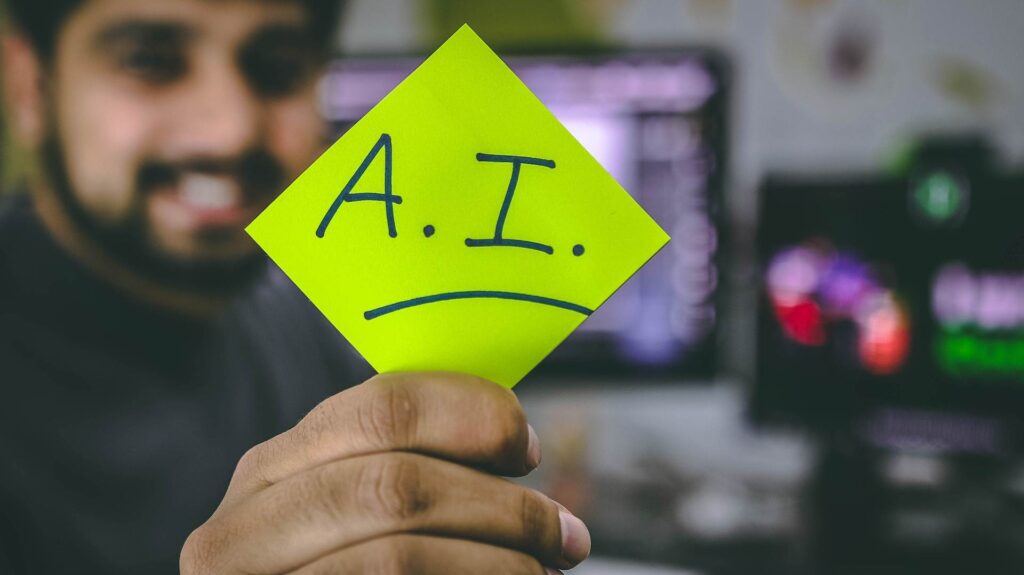7 uses of artificial intelligence for training

It is no news that artificial intelligence (AI) is already revolutionizing a large number of tasks previously considered monotonous, which have now been accelerated thanks to the use of these technologies. But how do these new tools affect corporate training?
Although so far only the Chat GPT or Bing applications of Microsoft Edge are known, cars that drive themselves or images created from certain instructions. Perhaps this is just the tip of the Iceberg.
According to statistics from Zyro blog, more than 35% of companies use AI in some form. Furthermore, it is predicted that almost “85% of companies consider investing in AI as a strategic priority for them.” Furthermore, according to a survey done by BUK, says that 85 % of people consulted say that their company has not addressed how to use Chat GPT.
But how can these technologies be applied to company training? In the following Ninja Excel article we come close to providing an answer. You will know the current uses of AI technologies in training environments and how it is projected into the future.
Learn more!
First: What is Artificial Intelligence?
The concept of Artificial Intelligence dates back to when Alan Turing published his work Computing Machinery and Intelligence where he seeks to answer if machines can think. From here is born the famous “Turing test” to demonstrate whether computers can demonstrate intelligence through a human interrogator who will try to distinguish whether an answer comes from a robot or a human.
According to Britannica, Artificial intelligence is defined as the ability of a computer to perform tasks associated with intelligent beings..
“The term applies to the development of systems that emulate human intellectual processes, such as the ability to reason, discover meaning, generalize, or learn from past experiences.”
Britannica.
From IBM it emphasizes that AI combines computing and a set of data to determine problem solving. However, the emergence of Chat GPT from Open AI has meant a turning point, due to natural language processing.
Now, you should not immerse yourself in searching for the exact fact or concept. The AI will search for it for you. “It's not just about language: generative models can also learn the grammar of software code, molecules, natural images, and a variety of other types of data,” says IBM.
What is the difference between Artificial Intelligence and Machine Learning?
There can usually be confusion between the concepts of Artificial Intelligence and Machine Learning. But here we will resolve the doubt.
As we said, AI is the ability of a computer or machine to imitate the human mind. That is, he is capable of learning from examples and experiences, recognizing objects, understanding and responding to language, making decisions, and solving problems.
Instead, Machine Learning (ML) is an application of artificial intelligence “which provides systems with the ability to learn and automatically improve the experience without requiring programming”. An example of this is the suggestion of movies and series that Netflix makes once you have positively rated something you liked. This is also how social media or YouTube algorithms work.

Why apply artificial intelligence in training?: Some reasons
Saving time to process information, personalizing the learning experience or searching that will help you understand a part of the lesson. These are some examples of why applying artificial intelligence in training should be a must. Now we will review it in depth. The information is from Shift.
- Excessive and long-lasting content: some training platforms can be dizzying with information. In synchronous online methods, for example, with Zoom or Teams classes, they use formats such as PowerPoint presentations, seminars and in-person conferences.
In accordance with shift, “Training content requires a minimum of 43-185 hours.”
- Lack of customization: Training sessions may be too generic for those looking for a real learning experience.
- Difficulty in measuring its effectiveness: to measure the Return on Investment (ROI) in Training You must collect a series of data. Artificial Intelligence would help in gathering and presenting the data all in one.
- Does not fit the digital workforce: Training is a continuous process. Current generations such as millennials and Gen Z value personalization and autonomy in their learning experiences, according to a report from LinkedIn Learning.
7 applications of artificial intelligence in training
What better than ChatGPT to tell us the best way to apply artificial intelligence in training? We asked him the question and this is what he told us:

Training Customization
AI makes it possible to adapt training programs to the individual needs of each employee. Through data analysis, AI can identify areas where each employee needs improvement and provide personalized content to address those specific needs.
Adaptive learning
AI can use machine learning algorithms to monitor and evaluate the progress of employees as they progress through their training. This allows the difficulty level and pace of training to be automatically adjusted to ensure each worker is being appropriately challenged.
Content recommendations
AI systems can analyze large volumes of training data such as study materials, videos, and assessments, to provide accurate recommendations on content relevant to each employee. This helps optimize study time and ensure employees are exposed to the most relevant information.
Training chatbots
AI-powered chatbots can provide real-time, interactive assistance during trainings. Workers can ask questions, receive immediate answers, and access additional resources through chatbots that use natural language processing to understand and respond effectively.
Simulations and virtual reality
AI can be used to create simulations and virtual reality environments that allow employees to practice skills and face realistic challenges. These immersive experiences encourage hands-on learning and improve knowledge retention.
Data analysis and evaluations
AI can analyze large sets of data generated during trainings to identify patterns and trends. This helps evaluate the effectiveness of training programs, identify areas for improvement, and make adjustments to optimize results.
Automation of administrative tasks
AI can automate administrative tasks related to training, such as scheduling courses, tracking employee progress, and generating reports. This frees up time and resources for training professionals to focus on more strategic activities.
Conclusions
AI is here to stay. Although users are just becoming familiar with the use of the tool, it is an opportunity to energize processes that were believed to be static, such as a corporate training.